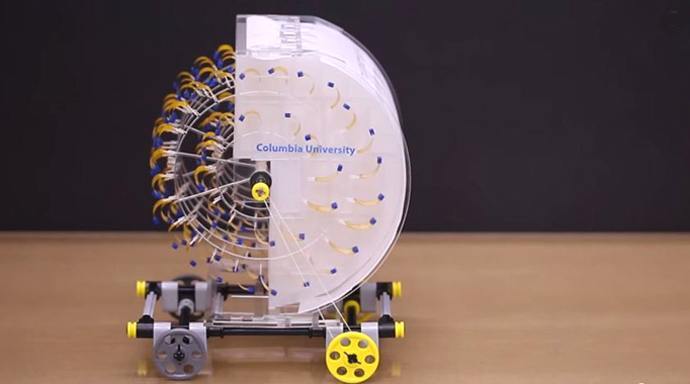Forget about searching for a charging point for a battery-powered Leaf, Tesla or Volt – engineers have built what promises to be every motorist’s dream; an evaporation-driven car that can be filled up at any water tap.

Forget electric cars. Water power is here
The associate professor of biological sciences and physics at Columbia University, Ozgur Sahin, used bacterial spores that shrink and swell when exposed to water to power a light and move objects, including a nanoscale model of a car.
The bacterial spores are embedded in a flexible tape. Changes in humidity cause the tape to twitch like an artificial muscle. The first test bed for the technology saw the tape used to open and close a series of shutters. Water poured into a tray below causes the air within a container to become humid, which causes the tape to open a series of shutters. When the humid air is released, the bacterial spores contract and the shutters close. The process continues until the supply of water runs out.
The second generation prototype was used to drive a small model of a car.
Sahin believes it will be be possible to build evaporation-driven piston engines big enough to power full-size cars. A huge version built off-shore could generate sustainable energy that relied only on a steady supply of sea water. More information about the water-powered car at nature.com
The ethical choice
The ETA was established in 1990 as an ethical provider of green, reliable travel services. Over 30 years on, we continue to offer cycle insurance , breakdown cover and mobility scooter insurance while putting concern for the environment at the heart of all we do.
The Good Shopping Guide judges us to be the UK’s most ethical provider.

Anthony
In – liquid water. Out – water vapour. So more energy out than in. Sounds more like a braking system than propulsion.
john mallows
Spot on Anthony. Iinitially sceptical, so gave the papers a speed read. Nothing to dispel my view that the actual source of energy is not the evaporation (in fact evaporation aborbs energy, anyone heard of latent heat of evaporation??) but comes from whatever energy source it is that causes the evaporation. e.g. sunlight (or ‘worse’ an electric heater, or ‘worse still’ a petrol burning heater!!). So at best we have an example of solar power, where this biological phenomenon is used as the conversion device. The issue, for us, then is whether or not it is more efficient at the conversion than, say, a PV cell. Beware any pedlar of this kind of stuff; if not you might find yourself buying a ‘perpetual motion’ machine – and serve you right. Meanwhile I’ll stay faithful to the second law of thermodynamics. (PS. notice on the author list there’s only one physicist in a gaggle of biologists – wonder how the nobbled him).